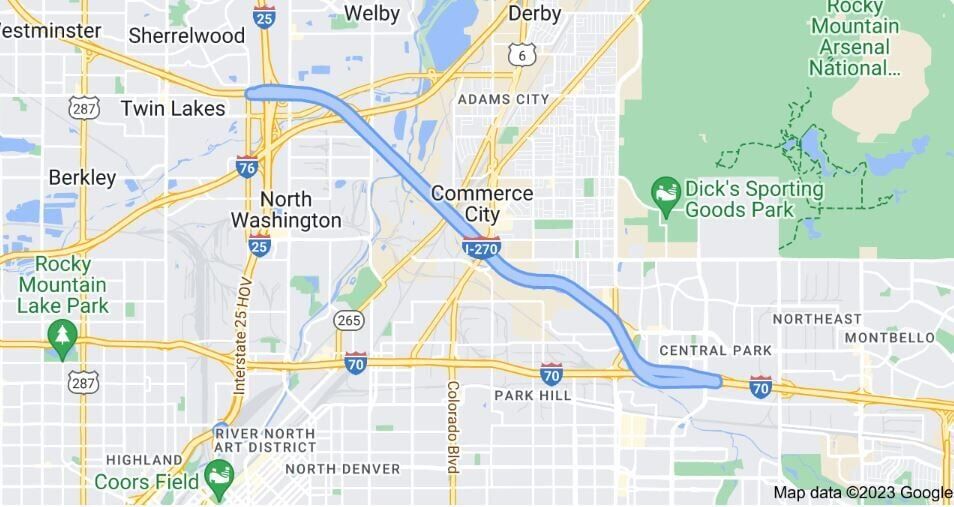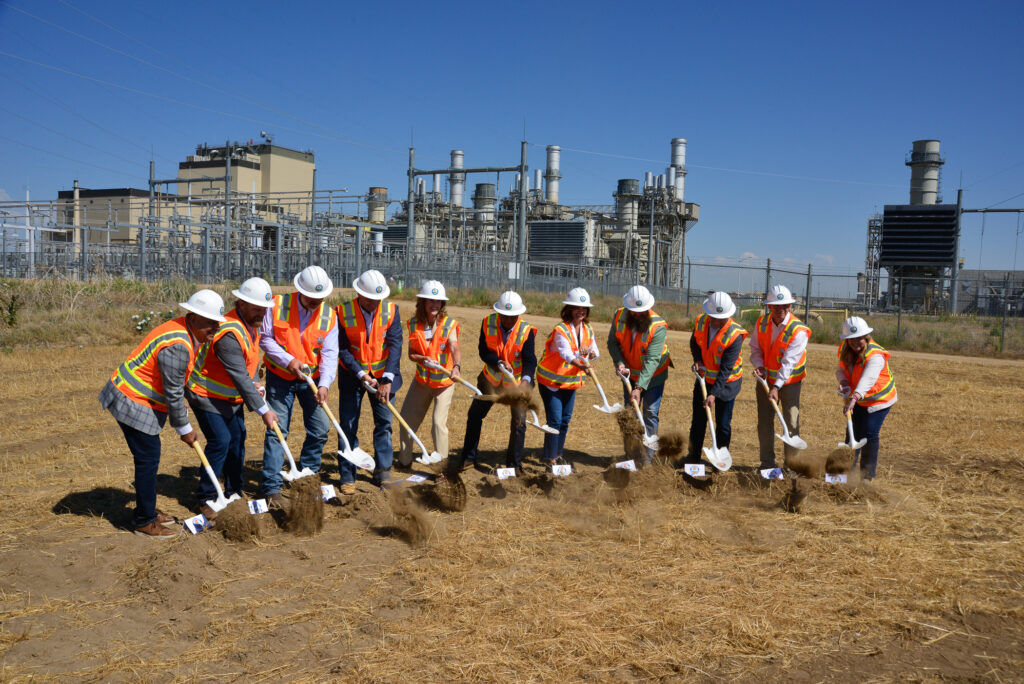CDOT seeks public’s input regarding improvements to I-270 corridor

The Colorado Department of Transportation and the Federal Highway Administration are seeking community input regarding the ongoing improvement project for the seven-mile stretch of Interstate 270 between Interstate 70 and Interstate 25.
CDOT and FHWA will be hosting an open house from 5 p.m. to 8 p.m. Tuesday, Oct. 10 at Eagle Pointe Recreation Center, 6060 Parkway Drive, Commerce City, 80022 where the public is invited to attend.
According to CDOT, the purpose of the project is “to implement transportation solutions that modernize the corridor to accommodate transportation demands.”
The primary goals of the project include improving safety by reducing crashes, improving travel time and reliability, updating outdated and obsolete infrastructure, and improving the efficacy and movement of commercial freight.
A growing safety concern
According to initial documents prepared by Jacobs Engineering for the I-270 corridor improvements study regarding safety found a greater-than-average fatal crash rate, and total and fatal/injury crash frequency, compared to average crash rates and frequencies for urban four-lane freeways in Colorado.
The study also found that crash trends have been increasing over the most recent six-year period and a large volume of crashes were semi truck related, due to the high volume of truck traffic on I-270.
The study did note an outside contributing factor – the increase in volume of traffic that could possibly be attributed to the recent projects on the I-70 corridor.
A traffic headache
Data collected from 2019 showed that the max travel time for the entirety of I-270 on weekdays could be as long as one hour and three minutes in the eastbound direction compared to around eight minutes if the traffic is free flowing. This was an increase of over six-and-a-half minutes compared to data collected just three years prior in 2016.
In the westbound direction, it was worse. Data from 2019 showed a max travel time of nearly one hour and 21 minutes on weekdays compared to just under eight minutes if traffic was free flowing. This was an improvement compared to 2016 when travel times could log up to 97 minutes at their max.
Updating infrastructure
Tied in with safety and efficiency of traffic flow, documents from the project note that by constructing new on-ramps, there would be an improvement of acceleration and deceleration of vehicles, particularly commercial trucks.
Working to accommodate “multimodal” forms of transportation such as the existing rail lines, pedestrian and bike paths are also part of the plan. Bike, pedestrian, and municipal traffic separate from the interstate were also components noted in the safety study.
Widening, grading, and repaving the lanes are also cited as improvements. In the safety portion of the documentation, it was noted that widening lanes could contribute to improved safety for the heavy commercial truck traffic on I-270.
Additionally, eight bridges within the I-270 Corridor Improvement Project area are reaching the end of their useful life and are in critical need of replacement, according to CDOT. CDOT notes that 65 emergency repairs have been made over the past decade and that the need for repairs has increased in frequency since 2020.
A freight artery
As previously reported by The Denver Gazette, I-270 is heavily used as a bypass for traffic heading for I-70 eastbound, I-25 northbound, Aurora and Denver International Airport, with more than 100,000 daily users.
An estimated 11% of the traffic is heavy trucks. Asked about restricting trucks to one lane, CDOT said designated truck lanes are typically considered when trucks comprise 20% or more of the traffic volume. Auxiliary lanes are being considered between some interchanges to allow for truck acceleration and merging. Wider shoulders for emergency stopping are also being considered.
According to CDOT’s safety conditions report: “I-270 is a critical truck route that has had higher-than-statewide-average truck crash rates for five consecutive years (between 2008 and 2014, according to the Colorado Freight Plan [CDOT 2019]). As a major truck route, I-270 carries an average of 11.7 percent trucks, while other urban interstates in Colorado carry an average of 10.2 percent.”
What are the next steps?
After gathering input from stakeholders including the general public, CDOT will draft an environmental impact statement which will also be available for public review.
Following the draft process, a final impact statement and record of decision are published. The record notifies the public of the decision made and presents the reasons for that decision.
When the environmental study is complete, CDOT would design and implement I-270 corridor improvements – prioritizing replacement of the bridges that are in critically poor condition as a first phase.
For complete information regarding the I-270 Corridor Improvements Study, including project documents, frequently asked questions and a schedule of public input events, visit the project’s website.














